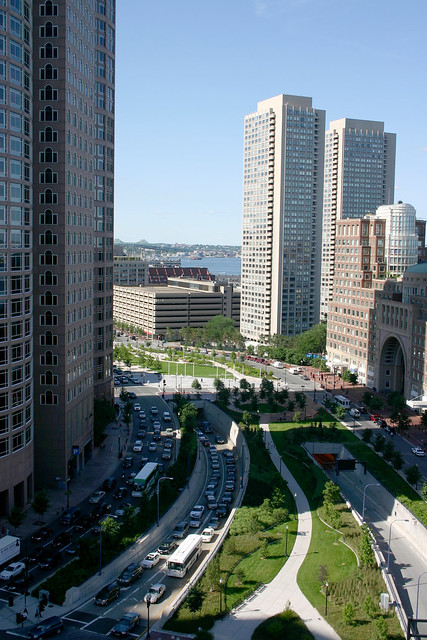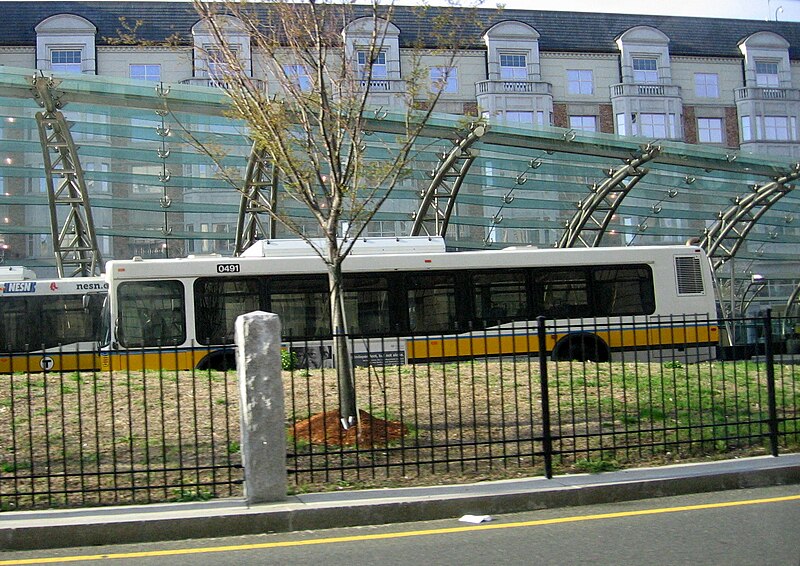I learned via
Human Transit that the
City Builder Book Club is conducting a group reading of Jane Jacobs's
Death and Life of Great American Cities.
This week covers the introduction, with a nice discussion by Mary Rowe. I recommend this book to anyone with an interest in the health, livability or economics of cities.
The first time I read this book, I originally picked it up from the library along with
The Image of the City by Kevin Lynch, a contemporary of Jacobs. I began reading Lynch's book first. Several days later, I happened to open the first page of Death and Life, just to see what it was like. I couldn't put it down. I finished several chapters that afternoon. Her writing style is incredibly compelling and bold. Consider the very first sentence: "
This book is an attack on current city planning and rebuilding." She wanted to show people that modern city planning was to science what bloodletting was to medicine. More from the introduction:
There is a wistful myth that if only we had enough money to spend--the figure is usually put at a hundred billion dollars--we could wipe out all our slums in ten years, reverse decay in the great, dull, gray belts that were yesterday's and day-before-yesterday's suburbs, anchor the wandering middle class and its wandering tax money, and perhaps even solve the traffic problem.
But look what we have built with the first several billions: Low-income projects that become worse centers of delinquency, vandalism and general social hopelessness than the slums they were supposed to replace. Middle-income housing projects which are truly marvels of dullness and regimentation, sealed against any buoyancy or vitality of city life. Luxury housing projects that mitigate their inanity, or try to, with a vapid vulgarity. Cultural centers that are unable to support a good bookstore. Civic centers that are avoided by everyone but bums, who have fewer choices of loitering places than others. Commercial centers that are lackluster imitations of standardized suburban chain-store shopping. Promenades that go from no place to nowhere and have no promenaders. Expressways that eviscerate great cities. This is not the rebuilding of cities. This is the sacking of cities.
 |
| Boston's West End, July 1958 (source) |
She dwells on several examples, including Morningside Heights in Manhattan, and the North End in Boston, 1959. Places that defy the expectations of planners. Boston neighborhoods will make a frequent appearance throughout the book, with descriptions that will be familiar to anyone from this city. In the North End she talked about walking through a wonderful neighborhood, with newly renovated buildings, people outdoors, stores thriving. She called up a friend in the planning department of the city and asked about how this prosperity was achieved. He told her: "Why [the North End], that's the worst slum in the city." This only illustrates just how nonsensical the planner's criteria were. And these misconceptions were dangerous -- it had only been a short time since the adjacent West End neighborhood
was demolished, and before that, a brand new
elevated highway was constructed that cut-off the North End from the rest of the city.
 |
| The West End, demolished, by September 1960 (source) |
The introduction also covers the sources of various influences in city planning, from the Garden City visions of Ebenezer Howard to the Radiant City Utopian monstrosity of Le Corbusier. Reading her descriptions of their ideas, I began to realize just how far they had penetrated into our society. Cities designed to look pretty from an airplane. Massive highway projects cutting through neighborhoods. High-rise residential towers with humongous parking lots. A fanatical devotion to the notion of "open space" at all costs, and grass everywhere. Separation of uses: residential here, commercial over there. Free parking as a birthright. You can trace much of this kind of thinking back to some authors from the 19th and early 20th century. A reaction against the problems of cities, especially back then, when health and sanitation were minimal. Their solutions were designed, regardless of intention, to destroy cities. To fix the problems of cities by ripping them apart and re-creating them according to some kind of orderly and sterile vision. That these ideas became the foundation of the field of city planning is a scandalous shame.
Jacobs introduced this background to contrast their approach with hers. She was not interested in an ideology which dictated the right answers. She wanted to learn the principles behind successful cities, and the failures of others, through observation and investigation of the reality of cities. As she wrote:
I hope any reader of this book will constantly and skeptically test what I say against his own knowledge of cities and their behavior. If I have been inaccurate in observations or mistaken in inferences and conclusions, I hope these faults will be quickly corrected.
 |
| Skyscrapers, open space, and highways (source) |
In the fifty years since she originally published this book, it remains timely and telling that her observations and inferences continue to be remarkably accurate and even prescient. There are many points when reading this book that I sat back and wondered: if I took this passage and quoted it out of context, would anyone know what year it had been written? Would they have guessed 1960? 1980? Or possibly 2000? Or even later? Some things simply have not changed. In a way, that's an unfortunate fact. Although she became somewhat of a folk hero for being part of the backlash against Robert Moses and the highway builders of New York City, the rest of the nation continued to pave over cities for decades to come. In Boston, it was not until the mid-70s that we finally got a moratorium against highways, and by then it was almost too late. Despite that moratorium, we still managed to sink $22 billion into
the Big Dig. You can walk down Market Street in San Francisco and discover that Civic Center is still suffering in quite nearly exactly the same way as she described it all those years ago. Downtown Pittsburgh was and still is drained of vitality, cut off from diversity of use by well-meaning but witless planners. It is the only place I have ever seen a major bookstore that closes at 5pm sharp on a weekday.
Many people do not want to have to think about issues of urban planning. They just want to get on with their lives and leave planning to the experts. But Jane Jacobs exposes the so-called experts as charlatans, with little useful knowledge, and a hideous history of malpractice behind them. Instead she implores readers to look for themselves, and "also listen, linger and think about what you see." As people, we live in cities, and are economically dependent upon cities. We cannot escape their importance, and so it behooves us to pay attention to their vitality.


















